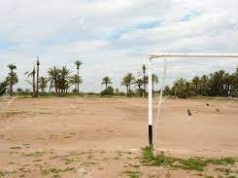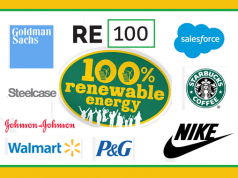The Energizing Education Programme is for the Federal Universities: What can their State and Private Counterparts do?
by Ayodele Babalola*
Introduction
Over two years ago, I wrote a piece about how Nigerian universities can generate renewable power for their own consumption rather than relying wholly on grid power and diesel/petrol propelled generators.[i] I pointed out that the universities could embark on Captive Power Generation in partnership with renewable energy service providers through “Revenue Finance”.[ii] Universities in Nigeria have acreage of lands lying fallow which can be utilized to set up solar plants and/or wind farms. The Energizing Education Programme (EEP) of the Federal Government is now in place for the federal universities and teaching hospitals. This piece proposes policy programmes for state and private universities with revenue finance at the center of it all.
About the Energizing Education Programme (EEP)
The EEP is an initiative of the Federal Government of Nigeria (FGN) to provide sustainable and clean power supply to 37 federal universities and 7 university teaching hospitals with total estimated capacity of 89.6 MW.[iii] The EEP entails the provision of an independent power plant, upgrading existing distribution infrastructure, street lightning and development of a world class training centre on renewable energy for each university. Through the Rural Electrification Agency (REA), the EEP is to be implemented in phases with phase 1 already ongoing. For phase 1, 9 federal universities, 1 teaching hospital, 127,757 students, 28,657 staff, and 15 clinics will receive uninterrupted power supply totaling 28.5MW using solar hybrid and/or gas powered plants. 156 access roads will also be illuminated by 2,850 street lights, and a projected 206 generators will be decommissioned.[iv] This is a big win for the development of our universities, research institutions, students and the environment.
Funding of EEP
Phase 1 of the EPP which entails seven solar hybrid projects is fully funded by the FGN through green bonds.[v] Subsequent phases are to be funded by the Nigeria Electrification Project (NEP), an FGN project in partnership with the World Bank and the African Development Bank.[vi]
Captive Power Generation
The state and private universities should also be looking towards embarking on captive power generation. Captive Power Generation is the generation of electricity exceeding 1MW for the purpose of consumption by the generator, and which is consumed by the generator itself, and not sold to a third party. A Captive Power Generator will need to apply for a permit from the Nigerian Electricity Regulatory Commission under the appropriate regulations.[vii] Where there is surplus power, supply can be made to off takers. Where the surplus does not exceed 1MW, the permit holder must apply for and receive prior written consent of the Commission before supplying to an off taker[viii] but where the surplus exceeds 1MW, the permit holder has to apply for a generation license.[ix]
Before Venturing into Captive Power Generation
To kick-start captive power generation, a university will need to embark on planning. This will involve determination of the proper energy mix based on location and the exploring of potential sites to narrow down the right candidate for a wind or solar farm. A feasibility study to determine the costs, location and public acceptance of the project is also necessary. Wind/solar and electricity consumption data will also be collected. The university should partner with a Solar or Wind Farm developer to assist with the development and construction of the project. Faculty and students in relevant disciplines including but not limited to Electrical Engineering, Environmental Studies and Energy Law should be involved for purposes of professional participation and development.
Policy Options for the State and Private Universities
As laudable as the EEP is, it is designed solely for federal universities and teaching hospitals. However, the state and private universities are not left without options. They too can initiate energizing education programmes through Revenue-Based Financing. As the name implies, it entails financing a project based on existing or projected revenue sources. I will narrow down on a particular revenue stream which fits into both categories, (existing and projected). This revenue has been, and is still being, generated by many Nigerian universities – Development Levy/Fees. The value of this levy differs across various universities in Nigeria.
Some universities in Nigeria levy both new and returning students for development while some others levy only new students. This levy has become so widespread that I was informed at a crèche that it formed part of their fees too. Let’s assume university “A” which has a new student population of Ten Thousand (10,000) usually levies each new student Three Thousand Naira (N3, 000.00) for development – “A” can successfully generate Thirty Million Naira (N 30,000,000.00) annually. Now let’s also assume that university “B” has a new student population of Ten Thousand (10,000) but usually levies each new student Ten Thousand Naira (N10, 000.00) for development – “B” can successfully generate Hundred Million Naira (N100, 000,000.00) annually. Imagine what the figures amount to where the returning students are also levied. Let’s not forget that the scenario is yearly based so imagine what will be generated in let’s say 5 years. It is also pertinent to state that very few universities levy less than “A” while others levy more than “B”. The 10 largest universities in Nigeria are reported to have a student population ranging from 37,430 to 90,885 students.
This levy seems to be the appropriate focus here because one of the crucial developmental needs of Nigerian universities at the moment is constant power. I am not suggesting new charges. I am suggesting the re-channeling of an existing levy for a suitable developmental purpose. With this kind of funding base, it shouldn’t be difficult for state universities to hire or partner with solar/wind developers on a negotiated funding mechanism. They may not even need financing from any financial institution.
State universities, polytechnics and colleges of education are primarily owned and controlled by the states. Each state can set up a Renewable Energy Agency (REA) and a Renewable Energy Education Fund (REEF) where development levies automatically deducted from students’ fees will be paid into. The REEF can be used to fund captive power generation. With this in place, it should not be difficult to attract the attention of the World Bank and the Africa Development Bank just like the EEP. As for the private universities, they could set up Power Education Fund (PEFs) where development levies will be paid into and applied towards captive power generation.
Students and faculty of each of the generating universities should be fully involved from the inception phase down to the commission and running of the projects. Involvement from departments like law, economics, accounting, electrical engineering, geography & urban planning is very important. The universities involved should also form a network for the development of common green policies and targets.
Conclusion
As part of phase 1 of the EPP, a 2.8MW Solar Hybrid was commissioned earlier this year at the Federal University, Ndufu-Alike, Ikwo, (FUNAI) Ebonyi State.[x] Also earlier this year, a 7.1MW Solar Hybrid, which is stated to be Africa’s largest off grid solar plant, was commissioned at Bayero University, Kano (BUK).[xi] The universities, students, faculty, research institutions, communities and the environment will benefit immensely from the FUNAI and BUK projects. As these projects unfold, high priority should be given to proper maintenance of the plants to avoid deterioration and eventual reversion to petrol/diesel generators. Attention should be given to the degrading rate of the solar components to ensure that replacements are made in due time.
The state and private universities are also in pole position to execute similar programmes within their domain. If they are serious about tackling the power problem, they should re-channel development levies towards captive power generation. The states should set up REAs and REEFs financed by the development levies paid by the students while the private universities can set up PEFs. This is the best application of a development levy because there is no meaningful development in the absence of power.
As the world seeks to
reduce greenhouse gas emissions, subnational action has become very crucial. The
interesting part in all of these is that the Nigerian students will be at the forefront
of the REEFs and PEFs as financiers. They will also be involved from the inception
of the project to its completion and even maintenance. This will also ensure that
there is always a pool readily available to draw from in terms of personnel.
* Ayodele Babalola is qualified to practice law in Nigeria and has an LL.M (Master of Laws) with specialization in Environmental & Energy Law and Public Law from the University of California, Berkeley. He is the Founding Partner, AOB Willows LP where he leads the Dispute Resolution, Environment & Elections Practice.
[i] Ayodele Babalola, What is Knowledge without “Power”: Lessons for Carleton College. LinkedIn (Feb. 21, 2018) <https://www.linkedin.com/pulse/what-knowledge-without-power-lessons-from-carleton-college-babalola/>
[ii] Id
[iii] <https://rea.gov.ng/energizing_education_programme>
[iv] Id
[v] Id
[vi] Id
[vii] Nigerian Electricity Regulatory Commission (Permit for Captive Power Generation) Regulations 2008
[viii] Id at Chap II
[ix] Id at Chap III
[x] <https://nuc.edu.ng/osinbajo-commissions-solar-hybrid-project-at-alex-ekwueme-varsity?>
[xi] <https://nuc.edu.ng/fg-commissions-africas-largest-offgrid-solar-power-plant-in-buk/>




